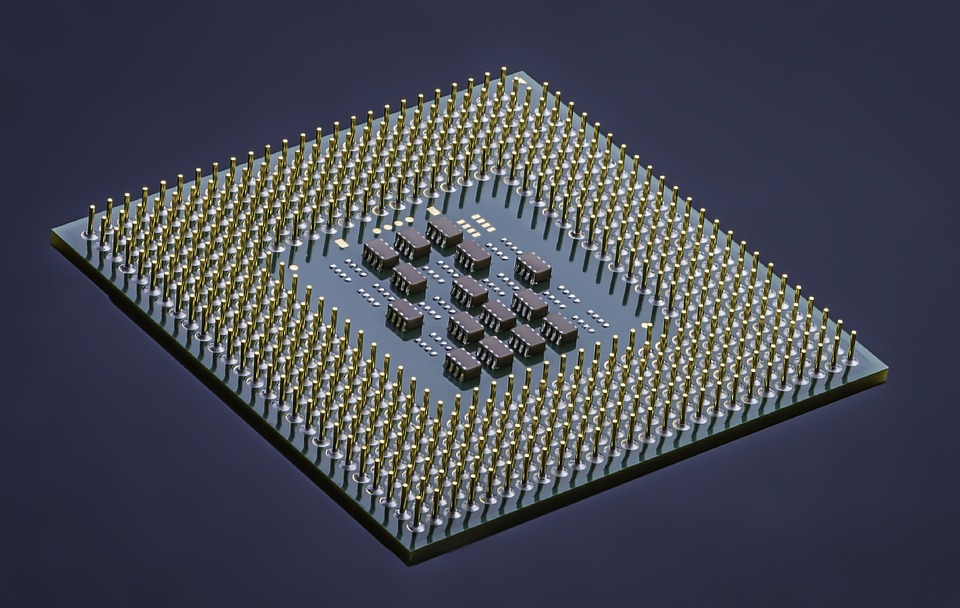By Warren Miller, contributing writer
When we think about high-tech companies and start-ups in particular, we may not think of traditional chip companies as often as their flashier internet or communications-oriented cousins. It seems like this past year has been a good one for chip companies to re-emerge with some ground-breaking and maybe even game-changing technology. After all, even those high-flying internet companies rely on chip technology advances to keep up with growing customer and application demands for increased performance, lower power, improved flexibility, and new features. Let’s look at a few chip companies that might show up over the next few years as the engines that the internet and communications high-flyers rely on.

Image source: Pixabay.
Flex Logix Technologies
Flex Logix supplies embedded field programmable gate array (eFPGA) intellectual property (IP), tools, and training that enables any system-on-chip (SoC) to change hardware in response to market shifts, changing application requirements or standards. The Flex Logix eFPGA IP is optimized for embedded applications and has significant density, flexibility, and portability advantages over other programmable architectures. Could the Flex Logix eFPGA become the de-facto standard embedded programmable IP architecture, similar to what ARM has done for embedded processors?
Innovium
Innovium, founded in 2015, came out this year with the Teralynx, an Ethernet switch silicon family that exceeds the 10-terabit-per-second threshold in a single chip. This could be a key breakthrough needed to build out the backbones that will aggregate the massive data generated by the vast IoT network that we are all hoping for. Co-founders include CEO Rajiv Khemani, former COO at Cavium and longtime runner of Intel’s processing business, COO Puneet Argarwal, and Vice President of Engineering Mohammed Issa. Argarwal and Issa both worked at industry leader Broadcom for many years and were instrumental in the implementation of Broadcom-based switches into data centers all over the world.
Esperanto Technologies
CEO Dave Ditzel, former VP of Intel’s Hybrid Parallel Computing Division and CTO at Sun Microsystems, recently made Esperanto’s first public technology disclosure — a high-end processor chip for AI technology based on the open-source RISC-V architecture. The design is based on the RISC-V microprocessor so it can run standard operating systems and has the benefit of common technical support, but it includes AI-specific extensions developed by Esperanto’s engineers. Ditzel literally helped write the book on RISC (Reduced Instruction Set Computer) architecture, co-authoring the authoritative tome on the subject with U.C. Berkeley computer science professor David A. Patterson. The company’s goals are to “deliver RISC-V-based computing solutions that will achieve both the highest levels of performance and energy efficiency for artificial intelligence and machine-learning applications.” Perhaps RISC-V will see the AI technology shift as a wedge to displace the current processor IP champion ARM.
Rigetti
Rigetti is a quantum-computing startup competing against industry giants like Google, Microsoft, and Intel. Founder Chad Rigetti developed quantum hardware at Yale and IBM before starting his own company in 2013. Quantum computing is the next frontier in high-level computing, using photons instead of transistors to achieve far greater processing speeds. Rigetti has just 80 employees, a minuscule labor force compared to the droves of engineers working on QC at Google or Microsoft. Google is dedicated to commercializing QC within the next five years, but there aren’t any breakthroughs on the immediate horizon. Although they may be years from producing any functional hardware, their investors believe that they will still create revenue from other companies paying to get a look at their R&D.
Graphcore
Graphcore is a U.K.-based startup that is developing chips for high-performance servers targeting artificial intelligence and deep-learning applications. The company believes that it can improve performance for these types of applications by 10 to 100 times over traditional CPUs and GPUs. It uses highly parallel computational resources together with graph software tools and libraries to allow researchers to explore machine intelligence across a much broader front than current solutions. This technology lets recent success in deep learning evolve rapidly toward useful, general artificial intelligence. The Graphcore intelligence processing unit (IPU) has been optimized to work efficiently on the extremely complex high-dimensional models needed for machine intelligence workloads. It emphasizes massively parallel, low-precision floating-point compute and provides much higher compute density than other solutions.
Preferred Networks
Founded by Toru Nishikawa and Daisuke Okanohara, two programmers who met at the University of Tokyo, PN is focused on deep learning, a field of artificial intelligence based on mimicking the way that the human brain learns. Deep learning has already created major breakthroughs in digital image recognition, and PN aims to apply the same ideas to the Internet of Things. Among its major investors is Toyota, which believes that PN can make inroads into AI and self-driving technology despite having just 60 employees. COO Junichi Hasegawa, a former VP at Sony, believes that Nishikawa and Okanohara have similar qualities to Akio Morita and Masaru Ibuka, the co-founders of Sony.
Looking to the future
With these types of devices and technologies, it seems like the Internet of Things, the associated artificial intelligence, and the deep-learning capabilities needed to really deliver on the overall promise of an intelligent and connected world might just be on the horizon. We can’t say for sure what the world will look like when we get there, but it will likely be dramatically different from the world that the first wave of chip startups delivered. Strap in; it’s going to be a wild ride.
Advertisement
Learn more about Electronic Products Magazine





